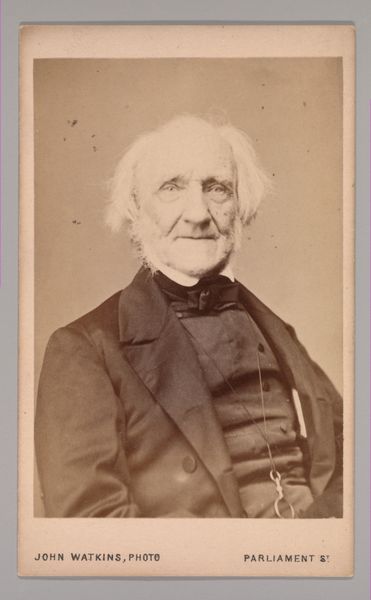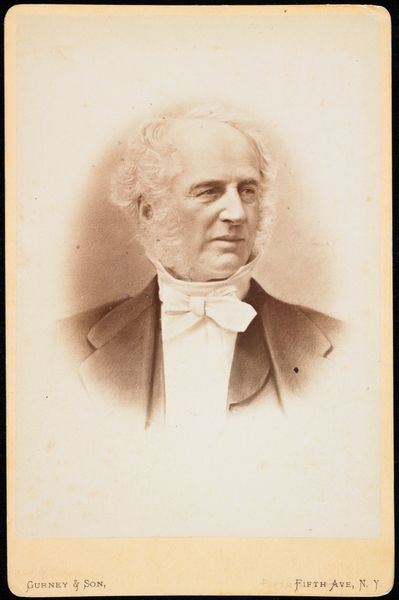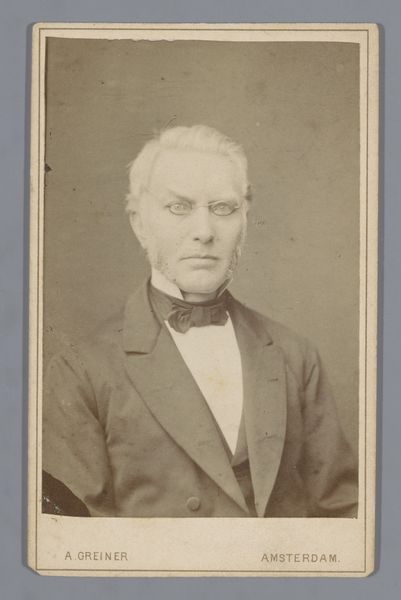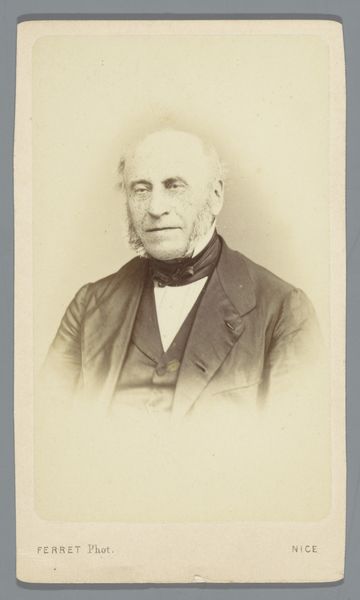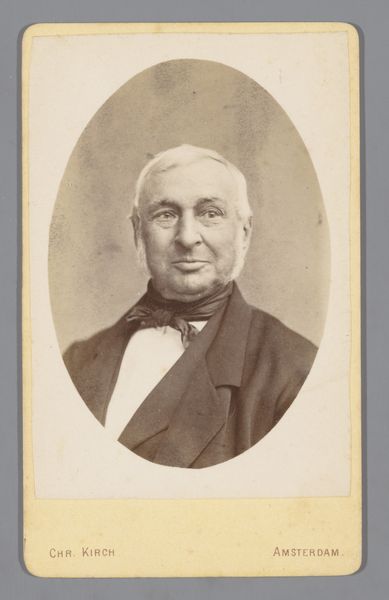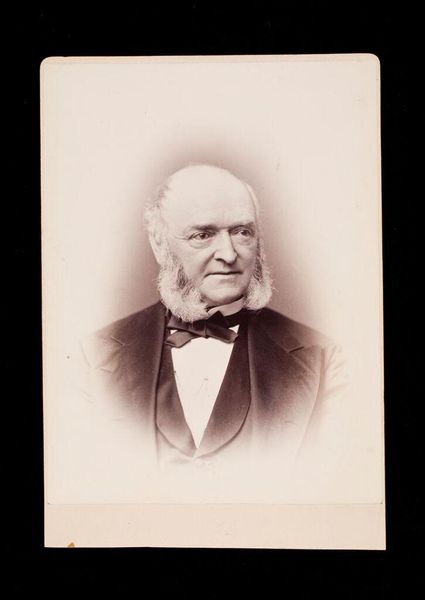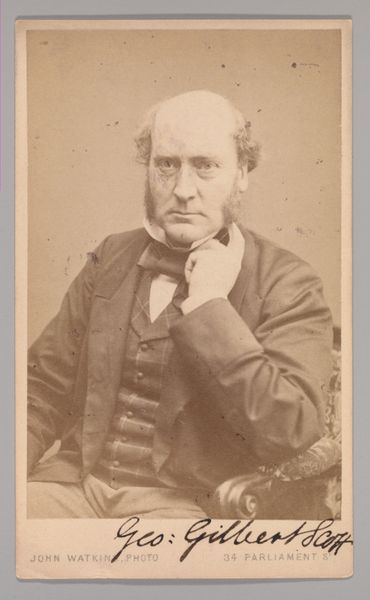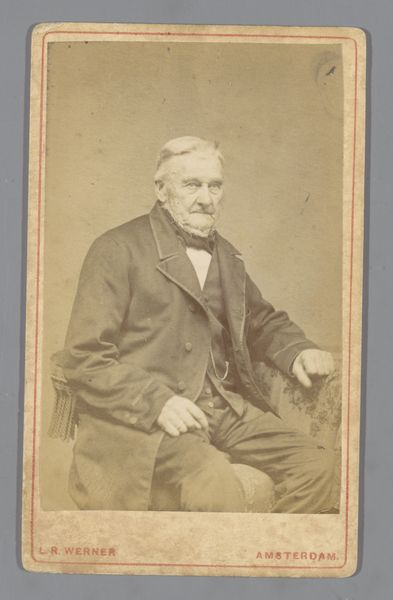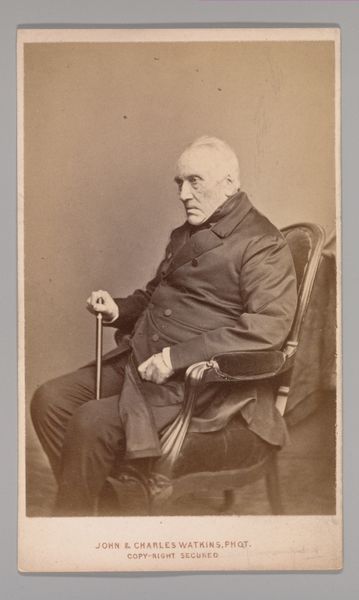![[Baron Carlo (Charles) Marochetti] by John and Charles Watkins](/_next/image?url=https%3A%2F%2Fd2w8kbdekdi1gv.cloudfront.net%2FeyJidWNrZXQiOiAiYXJ0ZXJhLWltYWdlcy1idWNrZXQiLCAia2V5IjogImFydHdvcmtzL2IwNzI0OGMwLWMyOTctNGQxYS1hNDQ4LWMzODA3NGRhZDdkNS9iMDcyNDhjMC1jMjk3LTRkMWEtYTQ0OC1jMzgwNzRkYWQ3ZDVfZnVsbC5qcGciLCAiZWRpdHMiOiB7InJlc2l6ZSI6IHsid2lkdGgiOiAxOTIwLCAiaGVpZ2h0IjogMTkyMCwgImZpdCI6ICJpbnNpZGUifX19&w=3840&q=75)
daguerreotype, photography
#
portrait
#
daguerreotype
#
photography
#
historical photography
#
19th century
Dimensions: Approx. 10.2 x 6.3 cm (4 x 2 1/2 in.)
Copyright: Public Domain
Curator: Standing before us is a portrait believed to be Baron Carlo (Charles) Marochetti, captured in the 1860s by John and Charles Watkins using the daguerreotype process. Editor: There’s an almost melancholic air about him, wouldn't you say? The subdued sepia tones lend a gravity to the image and he possesses such a self-assured expression, which strikes me. Curator: Absolutely. Consider how this image was crafted. Each daguerreotype is unique, an immediate capture upon a silvered copper plate, polished meticulously, fumed with iodine, and developed over mercury. It demanded incredible skill, and this speaks volumes of Watkins' process. Editor: It does highlight the painstaking labor involved. The Watkins studio was clearly catering to a particular clientele willing to invest time and money into immortalizing themselves in this way. How was the photographic process influencing portraiture compared to painted works? Curator: The daguerreotype altered the dynamics, especially in representing details with objective fidelity. Look at the precise detailing of his garments; how the light subtly shifts around his face, accentuating a moment in time captured in the composition. It provides the semblance of authenticity. Editor: I find myself wondering about the socio-economic implications. Was photography reshaping the market for portraits, becoming more accessible or intensifying class divisions through exclusivity? How do these portraits impact the accessibility for ordinary citizens to visualize what leaders actually look like? Curator: That is an essential consideration. But return to form: the limited tonal range inherent to daguerreotypes actually sculpts his features with shadows, highlighting the lines around his eyes and mouth. There’s a conscious articulation in this. The symmetry of the pose contributes to the balanced, almost classical composition. Editor: Yes, and the materiality, let’s not forget the fragility and the permanence locked into this object. These were crafted as artifacts, demanding attentive conservation, speaking to its ongoing value throughout the time it existed. Each daguerreotype embodies an intersection of artistic endeavor, technical innovation, and consumerist aspirations of nineteenth century society. Curator: The contrast created is striking. Examining its elements reminds us to reconsider portraiture's evolution through medium-conscious eyes. Editor: Agreed, the portrait, a poignant trace of past efforts and aspirations in tangible matter.
Comments
No comments
Be the first to comment and join the conversation on the ultimate creative platform.
